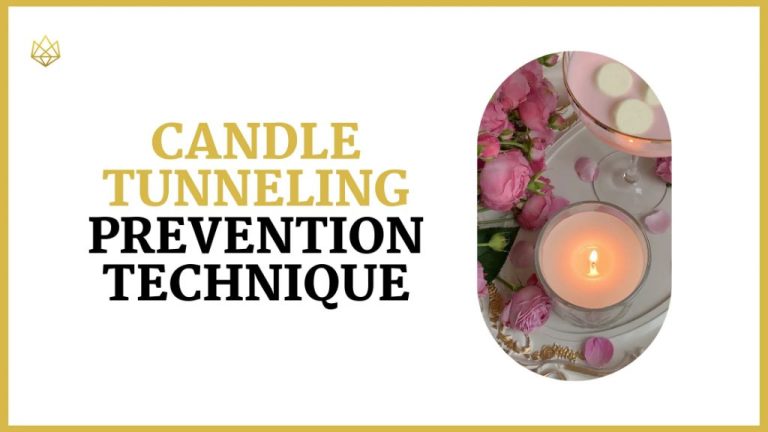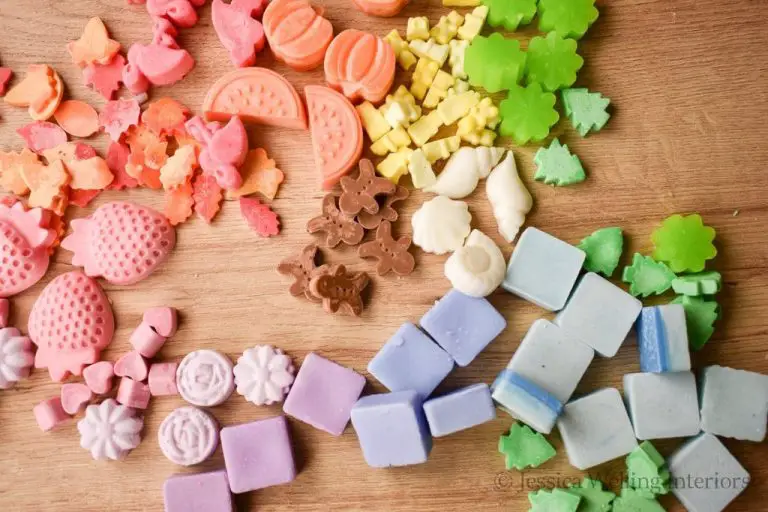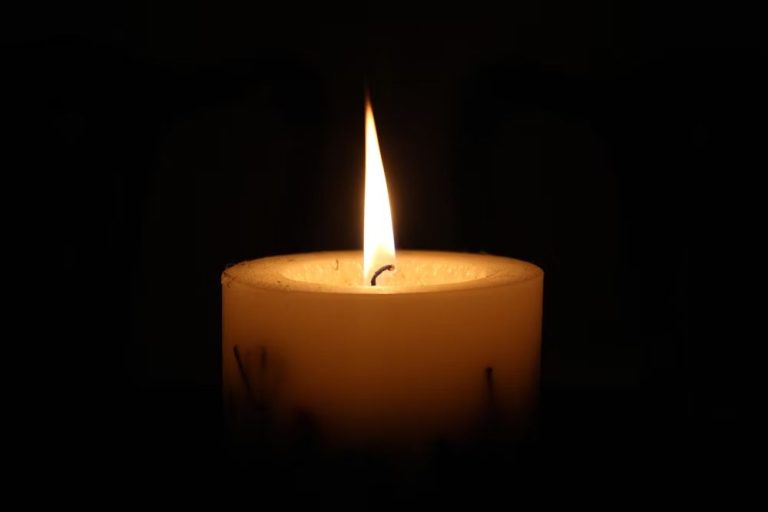Where Do You Put Candle Wax?
Candle wax is a substance used to fuel the flame in candles. The most common types of candle wax are paraffin, soy, beeswax, and gel wax. Candle wax melts when heated to form a liquid that holds the candle’s wick upright so it can be lit to produce flame. It also provides fuel to sustain the flame as the wax liquefies and is drawn up the wick. Candles are used for lighting, ambiance, decoration, aromatherapy, religious ceremonies, and celebrations.
After a candle burns down, leftover hardened wax remains. The remains, which can no longer fuel a candle flame, often get discarded. However, before throwing away candle wax, one should consider safe and sustainable ways to repurpose, reuse, or properly dispose of it.
Safety Considerations
When disposing of leftover candle wax, it’s important to keep safety in mind. Improperly discarded wax can pose fire hazards, harm pets if ingested, and more. According to Today.com, burning candles produces air pollution, so allowing wax to sit around in open air or compost can be unwise. Wax can also be slippery and lead to falls if left on floors. Pets like dogs and cats may eat wax out of curiosity, which could cause gastrointestinal obstruction or other problems, per Healthline. To avoid safety issues, contain wax fully when disposing and prevent access by children and pets.
Candle wax can be flammable, so storing or trashing large amounts may pose a fire risk. The National Fire Protection Association recommends keeping wax in sealed metal containers until fully cooled and solidified before disposal. When pouring hot wax, do so over a nonflammable surface away from flammables. Don’t leave burning candles unattended. Trimming wicks to 1⁄4 inch can also reduce unwanted fire hazards.
In summary, taking proper safety precautions allows for the safe reuse, recycling, or disposal of used candle wax. Being mindful of fire risks, pet hazards, and more can help avoid accidents and problems.
Reusing Candle Wax
One of the best ways to reuse candle wax is to melt it down and make new candles or wax melts. Here are some tips for remelting and reusing wax:
Before melting, make sure to remove any wicks, decoration, or debris from the wax. Clean the wax of any color dye by melting it and allowing it to resolidify, which will draw some of the color out. You can repeat this process until the wax is a neutral color.

Use a double boiler or makeshift setup with a glass jar in a pot of water to melt the wax gently. Avoid overheating. Pour the melted wax through a sieve or cheesecloth to filter out any remaining wick or debris.
For reuse in candles, you’ll need to purchase new wicks. Make sure to use wicks appropriate for the type and thickness of your candle. Consider adding essential oils, dyes, or other ingredients to create your own signature scent. Reuse any candle jars if still intact and clean.
Let reused wax fully harden before burning new candles. Store any extra wax in an airtight container. Over time, the fragrance of reused wax will fade, so use stronger scents. With care, wax can be remelted and reused successfully multiple times.
Sources:
https://www.marthastewart.com/7690300/how-get-wax-out-of-candle-jar
https://www.thespruce.com/how-to-reuse-candle-wax-5323863
Composting
Candle wax can potentially be composted, however some types of wax will break down faster and more thoroughly than others in a home compost pile. According to https://www.conserve-energy-future.com/can-you-compost-candle-wax.php, natural waxes like soy, beeswax, and plant-based waxes can fully decompose in a backyard compost bin. These waxes come from renewable sources and contain no petroleum byproducts. However, paraffin wax, a petroleum-based wax commonly used in candles, will likely not fully break down through backyard composting.
The potential pros of composting candle wax are that it avoids sending the wax to a landfill. If using a natural, plant-based wax, the wax may fully decompose in the compost pile and provide nutrients to the soil. However, a potential downside is that compost facilities may not accept candle wax if they are unable to process petroleum-based waxes. Backyard composters should research if their municipal compost accepts candle wax before adding it.
Whenever composting candle wax, it’s recommended to chop or shred the wax into small pieces first to help it break down faster. Candle wax should also be composted in moderation and mixed thoroughly with other compost materials like yard waste and food scraps.
Trash/Landfill
It is generally okay to throw away candle wax in your regular household trash that goes to a landfill. According to this Reddit discussion, most municipal waste services will allow small amounts of candle wax to be disposed of as normal trash. However, there are some considerations when sending wax to a landfill:
– Wax is slow to break down and decompose in a landfill environment. While not toxic, wax does take up space in landfills long-term.
– If you live in an area with waste-to-energy incineration, melted wax can gum up machinery at the waste-to-energy facility according to Napa Recycling and Waste Services. In some cases, candle wax may be prohibited from incineration facilities.
– For very large amounts of wax, check with your local waste authority. Some may request that you solidify the wax before disposing of large volumes.
In general, small personal amounts of candle wax can be safely landfilled. But for environmental reasons, consider repurposing wax if possible before sending it to a landfill.
Recycling
Many waste management facilities and recycling centers accept candle wax for recycling. The key is finding a location with a wax recycling program. Start by checking with your local recycling center or waste management company. Some will accept candle wax directly from residents along with their regular recycling pickup. Others may have drop-off locations to collect wax.
TerraCycle operates a national wax recycling program in partnership with candle brands like Yankee Candle. They provide free shipping labels so you can mail your old candle wax to their processing facilities. The collected wax gets melted down and turned into new candles.
If your area doesn’t have candle wax recycling, try reaching out to local art studios, makerspaces, or candle manufacturing companies. Many will gladly accept donated wax for reuse in their programs or products.
When preparing candle wax for recycling, make sure to remove any wicks, labels, adhesives, or other foreign materials. Wax should be free of debris, separated by color if possible. Hardened wax can be broken into smaller pieces to make it easier to melt down and process.
With some research, you can usually find candle wax recycling options available in most areas. This keeps the wax out of landfills and reduces waste from candles. It also provides materials for new candle production. Recycling candle wax is an easy way to be environmentally conscious and creative at the same time.
Donating
Many charities, churches, schools, and other organizations accept donations of leftover candle wax. This allows them to reuse the wax to make new candles for fundraising or craft projects.
For example, some animal shelters melt down donated wax to make candles they then sell to raise money (Spread The Light Candles). Schools may also accept wax donations for art classes to use. Places of worship like churches and temples could reuse wax for candles used in services and rituals.
When donating wax, be sure it is clean and free of debris. Wax from scented and dyed candles can usually still be accepted. Call ahead to find out an organization’s specific donation guidelines. Some may even offer to pick up the donated wax.
Donating leftover wax keeps it out of landfills and gives it a second life helping nonprofits. With some research, many local organizations can likely be found that will accept wax donations.
Selling
One way to get rid of leftover candle wax is by selling it. Selling leftover wax can help generate extra income while also keeping the wax out of landfills. There are several options for selling candle wax:
Online sales – Sites like Etsy, eBay, and Craigslist allow you to sell homemade and handcrafted items. You can melt down the leftover wax and pour it into molds to create new candles, wax melts, or other products to sell online. Advertise that they are made from recycled materials.
Craft fairs and markets – Look for local craft fairs, farmers markets, or holiday markets in your community. Rent a table or booth and sell your handmade wax products. Upcycling the old wax into new candles is an eco-friendly activity that shoppers will appreciate.
To neighbors and friends – Tell people you know that you can recycle their leftover wax into new candles or melts. Offer to pick up their wax leftovers and sell back to them at a discounted price.
Donate to charity fundraisers – Local charities like schools and churches sometimes hold craft sales or auctions to raise funds. Offer to donate some of your handmade wax products to help their cause.
With some creativity and effort, that drawer full of wax leftovers can be turned into extra money in your pocket. Selling repurposed wax is a great way to reduce waste and share your sustainable practices.
Creative Reuse
If you enjoy arts, crafts, and DIY projects, one of the best ways to reuse leftover candle wax is through creative reuse. There are many fun and inventive crafts that allow you to repurpose wax in decorative and practical ways.
One creative way to reuse wax is by making your own crayons. You can melt down old candle wax and pour it into crayon molds or silicone ice cube trays. Add some color with crayon shavings or liquid dye. Let cool completely and pop out your homemade crayons![1]
Leftover wax can also be turned into lip balm or lotion bars. Melt the wax and combine it with carrier oils, butters, and essential oils to customize the scent and benefits. Pour into containers and let solidify before use.
For an aromatic reuse, pour melted wax into ceramic dishes or jars and add dried flowers, coffee grounds, spices, or essential oils. The wax will hold the scent and create a long-lasting potpourri.
Other creative ideas are to use old candle wax to make decorative wax beads for jewelry, seal letters with a wax stamp, or coat thread for waterproofing.
With some creativity and imagination, the possibilities are endless when it comes to reusing candle wax for arts and crafts!
Conclusion
When disposing of used candle wax, it’s important to consider safety and environmental impact. The best options are to reuse the wax by making new candles, gift it to crafters and artists who can repurpose it into new items, or compost it if the wax is natural soy/beeswax. Wax can also be recycled at some facilities, but check if they accept candle wax specifically. As a last resort, candle wax can go in the regular trash for landfill disposal, however this does waste a reusable resource.
Proper disposal keeps wax out of drains and waterways, while reusing puts this material to good purpose. With some creativity and care, used candle wax can be given an extended life in new candles, art projects, and more. This helps the environment by reducing waste. With the right methods, we can dispose of candle wax responsibly.






